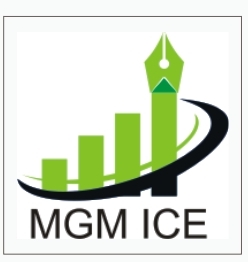FUEL PRICES MARCHING TOWARDS ITS CENTURY
The unprecedented rise in the petroleum product prices has affected the day to day life of every Indian. It has adversely affected the Indian economy as well as the common man in India. The record increase in price level of petrol and diesel has got cascading effect on Indian economy and it may lead to a situation of hyperinflation, if not controlled at right time. The Indian economy is largely dependent on imports of petroleum products from foreign countries, to the tune of 81% of its total requirement. The sustainability of Indian economy is not only dependent on reducing our dependence for petroleum products from outsiders but also on making reforms in the petroleum sector as well as bringing the petroleum products under the GST regime. The march of price level of petroleum products towards a century can be halted effectively, if these petroleum products are brought under the purview of GST regime and the petroleum prices would hover around just a half century rather than a complete century!
APM and Petroleum Products – The decision to dismantle the Administered Pricing Mechanism (APM) was taken by Government of India in year 2002 to allow oil companies to take independent decisions based on import parity and market forces regarding petroleum products and to phase out the subsidies on petroleum products. Petrol prices were freed from government control in June 2010 and diesel prices in October 2014, allowing oil marketing companies to fix retail prices in tune with global crude prices. The dynamic fuel pricing is being implemented all over India w.e.f. 16th Jun 2017.
Break-Up of Petroleum Prices in India – One barrel of crude oil is equivalent to 159 litres of crude oil. Currently, the price of petrol at the point of oil refinery is approximately Rs 39 per litre based on the international crude oil prices (79 dollars per barrel) whereas the same petrol is sold at the retail level at the cost of approximately Rs 88 to 89 per litre. The hopping Rs 50 per litre of petrol is charged as taxes by the Government and the OMCs. The Excise duty charged by Central Government and VAT levied by the respective State Governments constitute the maximum chunk of this increase in price. The basic aim of dynamic fuel revision system of benefiting the customers is eclipsed by the levy of indirect taxes by the Central and State Governments. The discrepancy in petroleum prices in neighbouring countries and the resultant frustration amongst common people is due to non-reduction of Excise duty and VAT charges by the Central and State Governments respectively. It is interesting to note that our neighbouring countries like Sri Lanka, Bhutan, Bangladesh, etc have much lower petroleum prices as compared to India. Indians pay 35% more for one litre of petrol as compared to Pakistanis in their country.
 The policy of blending of ethanol with petrol (upto 10% blending of ethanol with petrol) has been adopted in India since year 2017. Ethanol is a natural fuel (as made from sugar and starch) and can very well be mixed with Petrol without any changes in its basic composition and it also does not lead to pollution due to particulate material. However, the catch is Ethanol is priced at just Rs 40.85 per Litre, but is mixed in Petrol and the given rate is combined rate as been sold to the consumers. It means that if you fill your car with 30 litres of petrol, means you have filled 27 litres of petrol and 3 litres of ethanol, but still the rate charged would be the price of petrol and not the blended petrol.
The policy of blending of ethanol with petrol (upto 10% blending of ethanol with petrol) has been adopted in India since year 2017. Ethanol is a natural fuel (as made from sugar and starch) and can very well be mixed with Petrol without any changes in its basic composition and it also does not lead to pollution due to particulate material. However, the catch is Ethanol is priced at just Rs 40.85 per Litre, but is mixed in Petrol and the given rate is combined rate as been sold to the consumers. It means that if you fill your car with 30 litres of petrol, means you have filled 27 litres of petrol and 3 litres of ethanol, but still the rate charged would be the price of petrol and not the blended petrol.
It is not important that which Government is in power, but what matters is what changes you brought in the lives of people! Despite of a landmark indirect taxation reform of GST in India, the petroleum products are still kept outside the purview of GST and are being levied with higher rates of indirect taxes by Central and State Governments. The petroleum products would fall under 28% GST bracket (if brought under GST) and even if this highest GST bracket of 28% is applied to the petroleum products, the petrol would be available at Rs 52 per litre only. It’s high time that Government must reduce the indirect taxes on petroleum products and pass on the benefit of reduction of prices to the common man and bring smile on his face.
(The author of this article ,Lt Col (Dr) Satish Dhage, is an ex Army officer and has been qualified for IPS (Indian Police Services) through IPS LCE 2012. Presently, he is Director, MGM Institute of Competitive Exams Aurangabad. For any queries or feedback, he can be contacted on email id : drsatishdhage@gmail.com)



